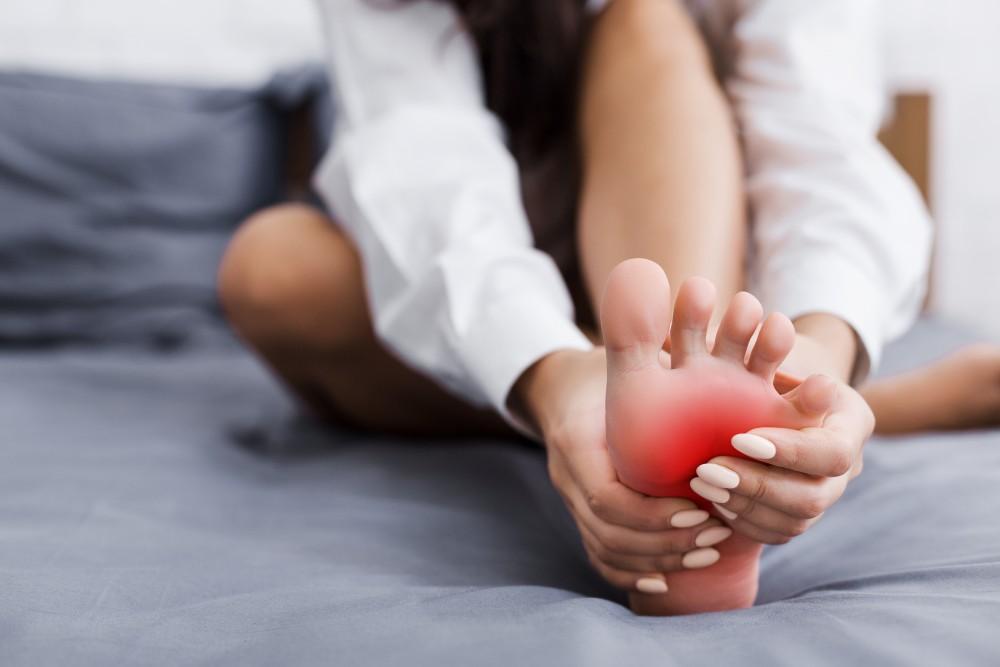
How to Prevent an Ingrown Toenail

An ingrown toenail is a condition in which a toenail cuts into the tender skin surrounding it. The condition can be agonizing and even make it difficult to walk.
Our experienced and caring providers at Premier Foot & Ankle are experts in treating ingrown toenails. However, they would like to keep you from getting them in the first place. In this blog, they explain how to prevent getting ingrown toenails and how to treat them if they occur.
Preventing ingrown toenails
In order to prevent an ingrown toenail from developing, there are things you can do to mitigate its causes. Among them are the following:
Learn proper cutting techniques
When you trim your toenails, cut them straight across rather than rounding their corners, and be careful not to cut them too short.
Use proper footwear
Wear shoes that fit well and have a roomy toe box. Wearing shoes or socks that are too tight can put too much pressure on your toes, which can lead to ingrown toenails.
Protect your feet
Do all you can to protect your feet from trauma. For example, if you work in areas where heavy objects may fall on your feet, wear steel-toed boots, as injuring your toes could lead to ingrown toenails.
Monitor your toenails
Make sure to look at your toenails when you take off your shoes at night. Catching an ingrown toenail early will likely lead to easier treatment. You should be especially careful to monitor your toenails if members of your family are prone to getting them. You’ll also be more susceptible to developing them if your nails grow in a curvy pattern.
Treating ingrown toenails
If you have an ingrown toenail, there are things you can do at home to treat it. However, professional care may be the best option depending on your situation.
At home
In the early stages, you may be able to treat your ingrown toenail at home. One option you can try is using dental floss to lift your nail slightly so that it doesn’t dig into your nail bed. But, you must remember to change it out daily. You can also apply antibiotic cream, and you can soak your foot in warm water with Epsom salts several times a day. When you’re not soaking your foot, keep it clean and dry.
If your symptoms worsen, this could point to an infection. It’s imperative that you see a podiatrist if your nail becomes discolored, or if the area around your ingrown toenail becomes extremely painful, red, or warm to the touch, or if you notice pus or blood draining from it. You may also experience chills if it’s infected.
It’s critical to seek treatment if you suspect an infection, because if an infection is left untreated, it could spread to the bone underneath your toenail. If you’re diabetic, don’t treat it at home. Instead, see a podiatrist right away. This is because even a minor foot problem can lead to serious complications.
Professional care
At Premier Foot & Ankle, we’ll first assess the severity of your ingrown toenail. Then we may prescribe topical or oral antibiotics. We may also prescribe a toenail splint to help lift the nail.
If your symptoms are more serious, we may recommend partially or fully removing your toenail. Removing the entire toenail is often recommended to patients who have persistent problems with ingrown toenails.
If you have an ingrown toenail and want treatment, or if you need any other type of foot care, book an appointment online or over the phone with Premier Foot & Ankle today.
You Might Also Enjoy...


Lapiplasty: How 3D Bunion Correction Works

How to Get to the Root of Your Chronic Heel Pain

5 Ways to Care for Your Athletic Feet This Year

How to Keep Toenail Fungus From Spreading


